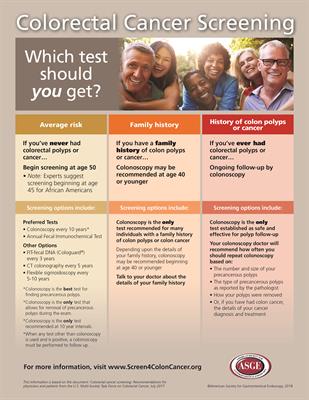Every medical specialty has issues that tend to play out in the media or in advertising from time to time. While those of us who are working in the field every day understand the nuances of this information, it may not be easy for patients to sort out what they see in news reports or product ads.
Recently, ASGE has responded to two such situations.
First, we’ve seen an aggressive advertising campaign directed to patients promoting Cologuard. Perhaps you’ve seen the TV and print ads as well as digital marketing popping up on targeted people’s social media feeds, etc. While we have nothing against Cologuard or the cute little “test guy” who lets everyone know how easy it is to be screened from your own bathroom, we do worry that the public will misunderstand the true difference between various tests. The ads state that the product is for people at average risk, but do most people in the target demographic have a good understanding of what that means?

Certainly ASGE has a great deal of good patient information about screening. But in response to this ad campaign, we felt that our members could really use a new visual tool to help explain the recent screening recommendations and rankings to patients as well as to primary care providers who recommend the tests. We developed a new poster [
link] that you can pick up at DDW to share within your network, and we also hope you’ll print it or use it as a digital asset for your website or social media. We hope you find it useful,
and please let us know what else is needed.
Our second recent issue arose when the
LA Times and
Kaiser Health News published a story based on a study by Ofstead
et al, which found bacteria remaining on scopes (GI and other) that had been cleaned. This was a small study of a few sites that, according to the report, were not following cleaning protocol.
It’s important for patients to understand that this should not be taken to mean that such situations are common. Indeed, I believe the vast majority of facilities have raised the bar in the wake of all of the attention devoted in recent years to the importance of vigilance in reprocessing. At the same time, we want patients to be able to ask how the facility where they’re being tested or treated ensures the cleanliness of its scopes. And we want our members to have the information they need to answer those questions meaningfully and satisfactorily.
We developed a
rapid response to the article. While we do not believe that this study deserves an overabundance of attention, the story serves as a reminder that we can never let down our guard on infection control.
At ASGE, we know that part of our job is to represent the perspective of our members around hot topics, and to respond to information (and misinformation) in ways that best help our patients. We will continue to monitor GI issues in the media, and to respond appropriately.